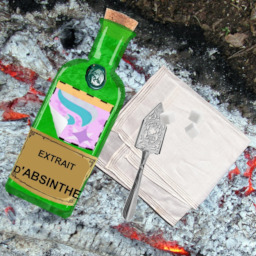
Credits
List of References
{Co-}Author’s note: Err...imagine that this whole chapter is in square brackets, because you all know that I’m the only person crazy enough to write this stuff.
{Hehehehehe}
Stuff coming from the show, owned by Hasbro: Sunset Shimmer, Starlight Glimmer, Celestia, Cadance, Nightmare Moon, Luna, Philomena, King Sombra, Sunburst. Equestria, Canterlot, Cloudsdale. Diamond Dogs, alicorns, the Mare in the Moon, CSGU.
List of references by chapter:
Preface
Kent State University: A reference to the “Kent State Massacre” of May 4, 1970, when the National Guard killed four students of Kent State University in Ohio that were protesting the Vietnam War and injured seven. As will be revealed later, the events at Kent State University in this universe went a different path that more than justified the label “massacre”.
Ergot Poisoning: This is a condition caused by the ingestion of bread made from rye or other cereals that have been contaminated by alkaloid drugs produced by a particular class of fungi. In 1976, Pr. Linnda R. Caporael wrote a popular article blaming the Salem Witch mania on this disease.
Rare conjunction of the four closest stars with our Sun: Yes, this is exactly what you think this is.
Actually written in 1671: And if you flip the “6” upside-down, what do you get? The tragic ending to this story.
Prologue
“Equestria, the land I love”: Song sung by Coloratura in the episode “The Mane Attraction.” It is never stated outright, but this is pretty much Equestria’s national anthem, so that’s how it’s being used here.
Equus: I suppose I should point out that this term to refer to the planet where the nation of Equestria is located was never used by the show, only by the fans.
Chapter 1
{Germs, guns, and steel as the chapter title is a reference to the book by the same name published in 1997, in which Jared Diamond takes a crack at trying to understand the rise, fall, and fates of nations, ultimately concluding that the power distribution of most societies is due to pure luck as to the geography they pick and whether it ends up having the resources needed to survive or thrive.}
Police codes used, in order:
- 10-20: “What is your location?”
- 10-19: “We are returning to the station.”
- 270: Being a vagabond—Prior to 1993, the state of Illinois was governed by the Illinois Revised Statutes, a collection of laws dating from statehood through 1874, and occasionally amended since then. Ill. Rev. Stat. had no specific law against indecent exposure, instead throwing it under the general definition of being a vagabond, Section 270, which I will now quote in full because it amuses me that a law with such language was still in force in 1967 (the only applicable part in bold):
All persons who are idle and dissolute, and who go about begging; all persons who use any juggling or other unlawful games or plays; runaways; pilferers; confidence men; common drunkards; common night-walkers; lewd, wanton and lascivious persons, in speech or behavior; common railers and brawlers; persons who are habitually neglectful of their employment or their calling, and do not lawfully provide for themselves, or for the support of their families; and all persons who are idle or dissolute and who neglect all lawful business and who habitually mis-spend their time by frequenting houses of ill-fame, gaming houses or tippling shops; all persons lodging in or found in the night-time in out-houses, sheds, barns or unoccupied buildings or lodging in the open air, and not giving a good account of themselves; and all persons who are known to be thieves, burglars or pickpockets, either by their own confession or otherwise, or by having been convicted of larceny, burglary, or other crime against the laws of the state, punishable by imprisonment in the state prison, or in a house of correction of any city, and having no lawful means of support, are habitually found prowling around any steamboat landing, railroad depot, banking institution, broker’s office, place of public amusement, auction room, store, shop or crowded thoroughfare, car or omnibus, or at any public gathering or assembly, or lounging about any court room, private dwelling houses or out-houses, or are found in any house of ill-fame, gambling house or tippling shop, shall be deemed to be and they are declared to be vagabonds.
The modern Illinois Compiled Statutes has a specific law defining indecent exposure, 720 ILCS 5/11-30, so a modern Illinois police officer would have used “11-30” instead of “270”.
- 10-45: “What is the condition of the patient?”
- 10-9: “Please repeat your last transmission.”
- 10-4: “Acknowledged.” (I figure this is the one everyone knows.)
Alice: The name of “Alice Shiner” as an alias for Sunset Shimmer was plucked from the air, but if you must have an Alice to be on the poster in order for your suspension of disbelief to work, how about Alice Crimmins? She went on trial in New York City in 1968 for the crime of murdering her two young children, and that trial was widely reported. Crimmins ended up going through three trials over five years to determine her guilt—most of the films inspired by the case concluded that she was not guilty.
Chapter 2
{A Modest Proposal as the chapter title is a reference to Jonathan Swift’s book published in 1729, in which he satirically proposes that poor starving Irish children be fattened up and then killed to feed the rich.}
“I’ve never heard anything like this!”: I don’t believe I’ve ever heard an Irish accent in Friendship Is Magic, have you? [Note to Hope: if anybody actually answers “yes” to that question in the comments, change “Friendship Is Magic” to “Canterlot”. And then whistle innocently if anybody tries to call you on it.] {Note taken, if they press the issue, I can also go on a long rambling explanation about how in Equestria, all Irish people are represented by some fantastical creature we haven’t met yet.}
CSGU: Celestia’s School for Unicorns.
Frogonard: Pony version of Jean-Honoré Fragonard, who is best known for his painting The Swing.
Chapter 3
{Das Kapital as the chapter title is a reference to both Starlight and Hope being DIRTY COMMIES!} (McPoodle: This is probably the point where all of the readers who spend their free time telling everyone else that they are the only “true Americans” gave up on this story. Good, because if they got to the part with Nixon in it, they would probably end up choking on their own bile.)
The Daughters of Bilitis: Also called the DOB or the Daughters; it was the first lesbian civil and political rights organization in the United States. It was formed in San Francisco 30 years before GLAAD. The name of the organization was chosen so as not to attract attention from bigots: Bitilis was the name of a fictional contemporary of the historical poet Sappho, invented by French poet Pierre Louÿs in his 1894 The Songs of Bitilis. The Songs were supposed to be a recently-discovered set of lesbian poems written by Bitilis and translated by Louÿs; the work was still well-regarded even after the fraud was revealed.
“Bright red with a hammer and sickle crossing each other”: These were the symbols on the flag of the Soviet Union, the joke being that Starlight Glimmer is a devout communist, {although ten years later when the Gulags become more common knowledge, she will probably switch to wearing a Marx pin, because she isn’t willing to excuse the crimes of any state, even those with a political system she believes would function better than capitalism.}
A flower that seemed to be on fire: McPoodle: I absolutely see this as a reference to the infamous “Daisy” commercial of 1964. {Amazingly, this is a better reference than the original, which was a reference to the famous “flower in the barrel of a gun” picture, which depicted a gay man standing up to state violence. Let’s say it represents both!}
“A little piece of paper they stuck in their mouths”: I didn’t feel the need to explain the marijuana reference, but I’m not sure all of the readers would be aware of acid stamps, sheets of paper perforated like stamps, and coated with LSD. Acid stamps are rather strongly associated with the hippy movement, and are the source of the word “Acid” in this story’s title.
“Oh Alice”: You put a character in the same decade as the song “White Rabbit”, and you are going to get Alice in Wonderland references. There’s no avoiding it. (Link is to the trippiest video of the song that I could find on YouTube. It’s not trippy enough.)
Marcus: Oh hey! You’ve reached the part of the story where you begin to wonder if this has any connection to my (McPoodle’s) fanfic At the Inn of the Prancing Pony. {And of course, the point where you realize that this is part of the MCPOODLEVERSE, THE FIRST FANFICTION UNIVERSE TO RIVAL MARVEL!!!!}
River Bend campsite: The River Bend RV Resort, located in the town of Watertown, Wisconsin, is one-third of the way between Madison and Milwaukee.
The Supplier: {Hope: This character drop was a vague implication that Starlight was being monitored and aided by an agent participating in the late stages of COINTELPRO, and being supplied with LSD by them.}
Chapter 4
{“A Place Not Called Waco” is a reference to the book published in 1999 called “A Place Called Waco” and, through that, a reference to Waco TX where a cult violently defended themselves against the police, after gathering a massive stockpile of weapons.}
Rockefeller: John D. Rockefeller (died 1937) is still considered the richest American of all time when adjusted for inflation. Claire Rockefeller is fictional.
Tax evasion: Rather famously, the gangster Al Capone was so good at covering his tracks that he was unable to be convicted for any of the violent crimes he was responsible for. Instead, he was convicted and sentenced to eleven years imprisonment, most of which was served in the Alcatraz Penitentiary, for tax evasion. {Fun fact and/or Hope drawing conclusions from nowhere, Al Capone lived in relative luxury, in part to convince him not to bring his connections to bear in an attempt to escape, which could result in many deaths and more people getting out!}
Absinthe: In reality, absinthe is merely a liquor originally flavored with extract of wormwood; it has a high alcohol content, it tastes like licorice, and has a neat green color. But thanks to the hyperbolic claims of the temperance crusaders, it came to be seen as hallucinogenic, with the most-famous hallucination being that of the “green fairy”.
Lord Byron: George Gordon Byron, 6th Baron Byron (1788–1824) was an English poet, held up as a role model for his dissipated lifestyle and liberal crusading, both of which of course was blamed by his detractors on absinthe. And then his admirers in turn started drinking the stuff hoping it would make them more like him.
“Life is a joy in Our Town”: {Hope: It’s basically the only part of the song that doesn’t explicitly refer to ponies, or make it clear how evil Starlight is. ‘You can’t have any nightmares if you never dream’ would be really hard to justify in this fic.}
Ashes: Ashes are commonly used in the Old Testament as a symbol of repentance.
The Ba and the Ka: Basically, the Ba is your personality, while the Ka is your life force. After death, the Ba and the Ka spend every night in your corpse...as long as that corpse is intact. Every sunrise, the Ka leaves the body to spend the day in Egyptian Paradise, while the Ba floats unseen around your descendants, protecting them from harm.
The six-pointed star: This symbol has many different meanings in different religions. In occultism, it is a protective symbol.
Octarine: A fictional impossible color, the combination of green, yellow (or orange) and purple, that is supposed to be the color of magic. It is used prominently in the fiction of Terry Pratchett.
The third nervous system: Another dropped plot thread, this one deliberately so.
“That’s despicable”: Quote by Daffy Duck from the Chuck Jones Warner Bros. cartoon “Rabbit Fire”, from 1951. (Yes, I am linking to the entire cartoon instead of just the relevant excerpt. It’s required viewing.)
Duck Dodgers: ...in the 24 1/2th Century (1953), another Chuck Jones cartoon starring Daffy Duck. Also the name of a great 2005 animated series.
Chapter 5
{“Young Pioneer Camp” as the title of this chapter refers to the USSR’s child camps because, once again, COMMUNISM!}
Ellen and Mary Jo: The moment when you knew for a fact that this story was tied to Inn of the Prancing Pony.
Peyote: Source of the hallucinogenic drug mescaline. Wow, a story set in the late 60’s with lots of psychoactive drugs in it...who would have guessed?
Capiche: American slang derived from the Italian capisci, “do you understand”.
The Mafia: Yes, of course. Because the use of any Italian word means you belong to the Mafia. (Wrote the Italian-American.) {The French-American just sat back and laughed.}
Crowley: Aleister Crowley (1875–1947) was the most-famous Satanist who ever lived. The quote I always attribute to him is the Law of Thelema: “Do what thou wilt—then do nothing else.” In other words, civilization is a sham, and you should do whatever you want to whoever you want, damn the consequences. Rather crucially, note that the story does not supply Crowley’s first name. Given that this story shows the origin of the gender-swapped human world of Inn of the Prancing Pony, that could make Crowley an Alice rather than an Aleister.
“Lime and limpid green...”: The opening lines from “Astronomy Dominé”, the opening song from Pink Floyd’s debut album, The Piper at the Gates of Dawn, 1967. A classic psychedelic album and song. It should surprise no one that recreational drug users adopted the song for their own use.
“the fuzz”: Hippy slang for the police.
“Ginger, Ginger, you’re a witch”: Start of the second verse of “Lucifer Sam”, the second song from The Piper at the Gates of Dawn. Here, have a Pink Floyd-inspired cartoon. Those are always fun.
“Our mother, who art with us always”: A contrast to the Lord’s Prayer, where the Father spends His time up in Heaven.
"...causing whole continents to float in the sky": A reference to Avatar: The Last Airbender
Raven Creek: Nope, this one was totally made up, so don’t try to find it on a map of Wisconsin.
“Only once, long ago”: This is a Sombra reference, in case you didn’t catch it.
Chapter 6
{“Mistakes were made” as a title here is a reference to how powerful people such as Nixon, Bill Clinton, Starlight Glimmer, and countless generals throughout history have used the phrase to excuse their wrongdoing.}
“Name’s Rogers...like the Mister”: Mister Rogers’ Neighborhood. If you don’t know what that is, google it. {Then watch all of it and become a happier person.}
Mutual of Omaha’s Wild Kingdom: Mutual of Omaha is an insurance company, founded in 1909. Wild Kingdom was a nature-focused documentary television series sponsored by that company that originally ran from 1963 to 1988. It was hosted by zoologists Marlin Perkins and Jim Fowler.
“I usually rely on the ea...experts to tell me how bad it is”: I can never tell in cases like this if all of the readers can figure out what the character caught themselves almost saying. In this case, Sunset was going to say that she gets her earthquake warnings from the earth ponies.
Mickey Mouse: Bound and beholden servant of the great and powerful Walt Disney Corporation.
Chapter 7
1984: More properly Nineteen Eighty-Four, the 1949 dystopian novel by George Orwell which has as one of its concepts “doublethink”: “To know and not to know, to be conscious of complete truthfulness while telling carefully constructed lies, to hold simultaneously two opinions which cancelled out, knowing them to be contradictory and believing in both of them, to use logic against logic, to repudiate morality while laying claim to it, to believe that democracy was impossible and that the Party was the guardian of democracy, to forget whatever it was necessary to forget, then to draw it back into memory again at the moment when it was needed, and then promptly to forget it again, and above all, to apply the same process to the process itself—that was the ultimate subtlety: consciously to induce unconsciousness, and then, once again, to become unconscious of the act of hypnosis you had just performed. Even to understand the word—doublethink—involved the use of doublethink.”
Billy Ortega: Made-up name.
Gone with the Wind: By 1970, I doubt anybody was reading the 1936 novel, so this a reference to the 1939 movie directed by Victor Fleming for MGM. And it was the most-popular film of all time, until...
The Sound of Music: 1965 musical directed by Robert Wise for 20th Century Fox. In 1971, Gone with the Wind was re-released for the sixth time (MGM milked this film for all it was worth), which bumped that film back up to #1 grossing movie of all time. The Godfather became #1 in 1972, Jaws in 1976, and Star Wars in 1978.
Bedknobs and Broomsticks: This film, which Robert Stevenson directed for Walt Disney Productions, was released in 1971 in our universe, but the reference was far too good not to use, so in the universe of AAA, it’s a 1969 release.
Chapter 8
{Hopeless Dreamers as the title is a reference to both the general concept and to MakeWar’s song by the same name.}
Star Trek: The original series had finished its broadcast run in 1969. Executive producer Gene Roddenberry, distributed by the American NBC network.
Three and a half billion: That was the world population in 1967. It’s nearly eight billion now.
Judgment at Nuremberg: 1961 courtroom drama directed by Stanley Kramer for United Artists, about the trial of four Nazi judges and prosecutors for crimes against humanity.
Chapter 9
{The title “I am not my mother’s daughter” is a saying and title used in many places by many people who have been broken or abandoned by their mother figures. Here, it’s a herald to the pains both of our main characters share about their past.}
Chicago Riots: The term “1968 Chicago Riots” is usually used to refer to the reaction to the assassination of Martin Luther King Jr. on April 4. The Vietnam War protests timed to coincide with the Democratic National Convention in late August of the same year gets the much less punchy title of “1968 Democratic National Convention Protests”. The protests themselves were largely peaceful, but the Chicago police, the Illinois National Guard, the FBI, the Secret Service, and the Democratic Party itself made sure that it was very much a riot...a police riot. The rallying cry of the protests, recorded live on national television, was “The whole world is watching.”
Yippies and MOPE: Nickname for the Youth International Party, the group that organized the protests. The group liked to be confrontational, making dangerous threats that it had no intention of carrying out, like spiking Chicago’s water supply with LSD. The group was led by Abbie Hoffman and Jerry Rubin. Meanwhile the more-radical wing of the Democratic Party ran the National Mobilization Committee to End the War in Vietnam (abbreviated MOBE), run by David Dellinger, Rennie Davis and Tom Hayden. They participated in the protests in hopes of getting a sympathetic candidate, Eugene McCarthy, selected as the Democratic president for the 1968 election. In this alternate universe these five men and two others became seven women, the Chicago Seven who would be charged with the crime of using interstate commerce to incite a riot. They were acquitted of this charge, but Davis, Dellinger, Hayden, Hoffman and Rubin were found guilty of crossing state lines to incite a riot. The simultaneous trial of eight police officers accused of brutality ended with no convictions.
Mary Poppins: Fictional character created by P. L. Travers in 1934, portrayed by Julie Andrews in the 1964 Walt Disney Productions film directed by Robert Stevenson.
Scooby-Doo and Shaggy Rogers: In our universe, characters from the cartoon TV show Scooby-Doo, Where Are You! (1969, created by Joe Ruby and Ken Spears, produced by Hanna-Barbera for the American CBS network), but real in this universe.
Chapter 10
{Piano Man is a reference to both the song “Piano Man” and also “the regular crowd shuffling in” in connection to the zombie horde!}
Laverne & Shirley: Television sitcom, a spin-off of Happy Days, about two friends and bottle-cappers at the fictitious Shotz Brewery in late-50’s Milwaukee. The opening credits feature scenes from the city. Executive produced by Garry Marshall, Thomas L. Miller and Edward K. Milkis for the American CBS network, it ran from 1976 to 1983.
May 1, 1970: This is three days before the Kent State shootings in our reality. See the Preface reference note for the bare details of the historical event. Also, the original protesters were male students, not mothers. As for the use of an atomic bomb, William Westmoreland, commander of U.S. forces in Vietnam, had actually proposed the use of nuclear weapons in 1968 in that country if affairs ever warranted it. Why would Richard Nixon order his own country to be nuked in this alternate reality? Ergot poisoning, obviously.
Femme Fatale: A stock fictional character type, the beautiful woman who uses her sexuality to lure powerful men to their doom. She was very popular in film noir such as The Maltese Falcon (1941), Double Indemnity (1944), Mildred Pierce (1945), Leave Her to Heaven (also 1945), Gilda (1946, no relation to the griffon), The Killers (also 1946), and many, many more.
Film noir: A genre of film made starting in the 1920’s, but with the American heyday in the 40’s and 50’s, about innocent characters venturing into unexpectedly-seedy settings. The look and feel of the genre are heavily-dependent on black-and-white cinematography, in order to best symbolize black-and-white morality giving way to a world all in gray.
“Bricka bracka, firecracker, sis boom bah!”: During a scene from Chuck Jones’ Warner Bros. cartoon “Super-Rabbit” (1946), Bugs Bunny manages to briefly trick the villainous cowboy and his horse into rooting for him.
“When the night has come...”: Here’s a link to the song “Stand By Me”, by Ben E. King, 1961.
A Rankin-Bass special: Rankin-Bass was a television animation company founded by Arthur Rankin Jr. and Jules Bass in 1960. They were best known for a series of stop-motion musical holiday specials that aired annually almost without interruption from 1968–1981, most-famously the series that began with Rudolf the Red-Nosed Reindeer in 1964. They also made traditional cell-animated specials and theatrical movies, including The Hobbit (1977), The Return of the King (1980) and The Last Unicorn (1982).
“Storm the castle”: Did you know Jonathan Young released a song with that name this year? “Rise now, stand and sing. Storm the castle, kill the king!” Anyway, the phrase has a ton of uses, but due to my age the one that always comes to mind is Billy Crystal in The Princess Bride (1987).
Pabst Blue Ribbon: This is a lager beer sold by the Pabst Brewing Company of Milwaukee, starting in the year when the brewery was founded, 1844. Its current name comes from the blue ribbons that were tied around the bottle necks between 1882 and 1916, in honor of the awards the beer had won in a multitude of competitions at fairs across America.
Clydesdales: This large breed of draft horse has been associated with the Anheuser-Busch brewing company since 1933, when a team of them pulling a wagon was used to celebrate the repeal of Prohibition. They were featured in the “Here Comes the King” commercial for their Budweiser lager, which started airing in 1967, and that commercial in turn was featured in the film Close Encounters of the Third Kind (1977). The brewery was founded in 1852 by Eberhard Anheuser and Adolphus Busch, and is based out of St. Louis, Missouri.
Jingle Bells: A Christmas carol, the best-known of all Christmas carols, written by James Lord Pierpont in 1857. There’s a million recordings I could link to, so how about its use as the first song ever sung in space, by Gemini 6 astronaut Wally Schirra on harmonica and Tom Stafford on sleigh bells, on December 16, 1965.
{Bourgeois: Noone can spell it, everyone can say it, and half the people who say it don’t seem to understand it’s actual meaning.}
Rudolf the Red-Nosed Reindeer: The character originated in a 1939 coloring book written by Robert L. May for the Montgomery Ward department store chain, given away to customers as an act of holiday good will. The story was first adapted in animated form by the Jam Handy advertising firm by Max Fleischer in 1948, made the subject of a Gene Autry song by Johnny Marks in 1949, and became the star of his own Rankin-Bass special and shared holiday universe, 1964–1979.
{Plan 66: Reference to Order 66 given by the clone troopers to wipe out the Jedi, not because it’s thematically appropriate, but because the image of Starlight ordering a bunch of clone troopers to murder the reindeer and elves of Santa is just too enjoyable to pass up on.}
A spell wiping Christmas: Reference to the Friendship Is Magic episode “A Hearth’s Warming Tail”. You know, I feel a little dumb pointing these show references out, but I guess if there’s one person who didn’t get it, then it’s all worthwhile.
Black Friday: I expect that everybody knows what this term means. It was independently invented multiple times starting in 1951, the approximate year when the use of Santa Claus in Thanksgiving parades cemented the idea that the day after the holiday was the official start of the Christmas shopping season. For the first few decades of its use, the use of “black” before the weekday name always had negative connotations, just like the “Black Friday” which launched the Panic of 1869, or the “Black Tuesday” which launched the Great Depression of 1929–1939. The exact meaning varied: it could mean the day when everyone called in sick so they could get a four day weekend (bad for the employers), or it could mean the day when bargain-crazy shoppers caused trampling and traffic accidents (bad for...well everyone caught in the chaos). Around 1981, when the term had become well-known across America, it was rebranded as a positive event, the moment when the “red ink” of retail losses would turn into the “black ink” of cumulative profits. This leads to a very negative connotation: that the irrational “buy your love with presents” holiday of Christmas is the only thing keeping the great majority of stores from being swallowed up by their normal expenses. (See Jingle All the Way, 1996).
Chapter 11
The Milwaukee County War Memorial: This building was designed by Eero Saarinen, and dedicated on Veterans Day, 1957. (Link to a photograph on Wikipedia, taken by Peter Alfred Hess.)
Chapter 12
Legos: The LEGO Group, founded in 1932 by Ole Kirk Christiansen, are manufacturers of the buildable toys. In 1970, the American and Canadian branch of the company was managed by Samsonite, the luggage makers.
“Oh I could hide...”: The song “Daydream Believer” was written by John Stewart for The Monkeys in 1967. The music video has 48 million views for a reason. If this was 2015 I’d throw in a quip that John Stewart of The Kingston Trio is not to be confused with Jon Stewart of The Daily Show, but I figure everybody’s forgotten the comedian by now.
“Or before you’re even born”: See the depressing reference note under the Preface.
Chapter 13 didn’t have any references, other than Nightmare Moon stuff from the FIM series premiere.

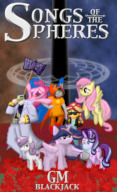
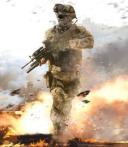

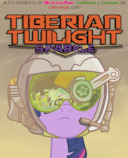

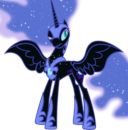



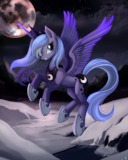


Which Glimmy was in the last chapter? Earth's or Equestria's?
11163678
The pony was the actual Equestria Pony named Starlight Glimmer! The ages of the pony and human don't always match up.
"Mr Crowley won't you ride my white horse?"
11163680
I hope somehow someway Glimmy and Sunny meet again.
11163683
Don't read to the end of this chapter if you want this story to have an unhappy ending (hint, hint).
11163763
McPoodle, as always you are the best co-author, and your attention to detail is far far beyond my own!
Point of interest: "Shaggy" is a nickname. The young man's actual name—in the Hanna-Barbera universe, anyway—is Norbert.
In any case, magnificent work from the both of you. I do regret not being here as the story developed, but at least I got an outstanding complete read out of it. (And goodness, this Earth just keeps connecting to more Equestrias, doesn't it?) Thank you for this.
Awesome! Going to reread the prancing pony now
11170647
The wicked web we weave!
This was a story that deserved more credit, and I congratulate you for finishing it.
11209883
Thank you, McPoodle and I enjoyed writing it a lot!
Shouldn't that be
CSGU: Celestia’s School for Gifted Unicorns.
11319438
Thank you! Fixed it
11319606
You are welcome!^_^